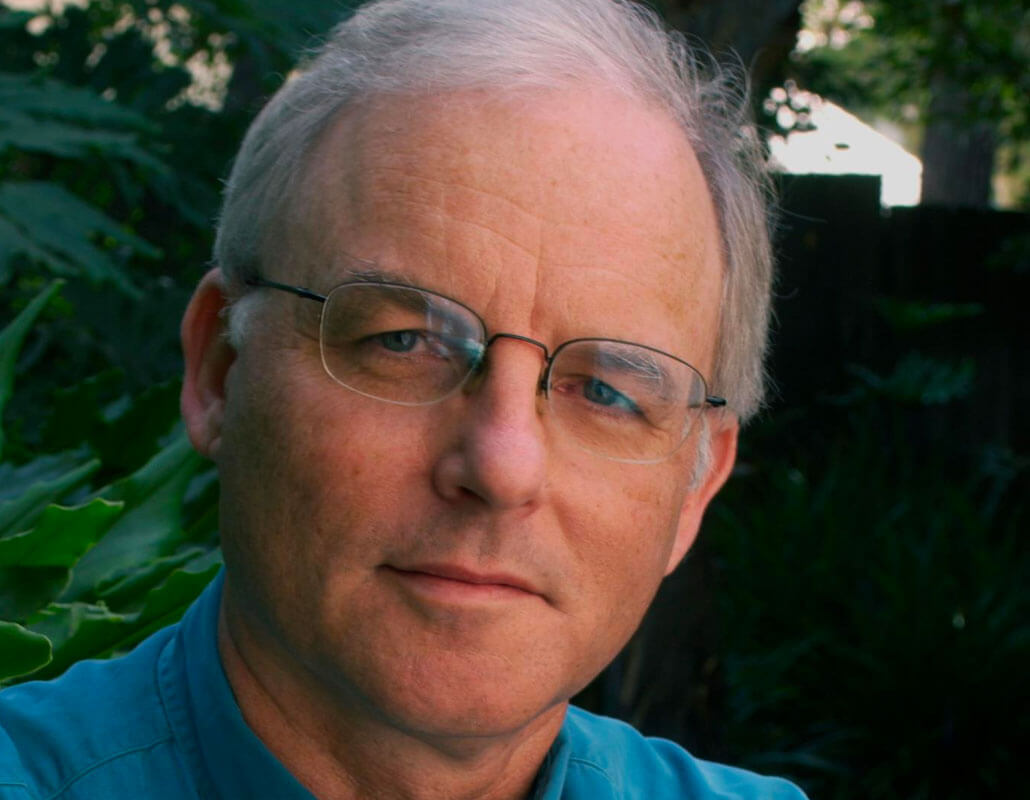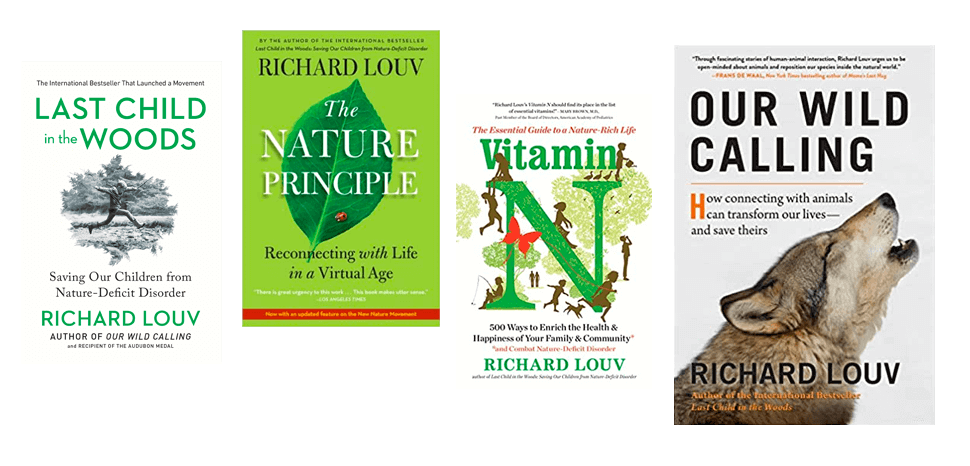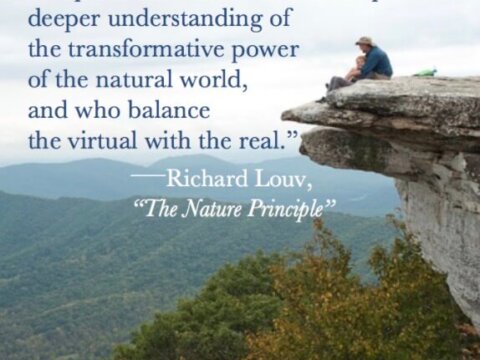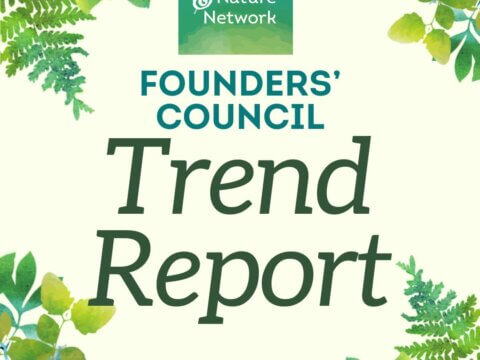GROWING THE NEW NATURE MOVEMENT: Systems Reform, Individual Action and Connection to Nature as a Global Human Right
History is littered with the good intentions of cultural movements that never reached their full potential. Or were forgotten for decades, then belatedly born again.

Photo by Jon Baldivieso.
Consider the nature study movement, which took place in the late 19th and early 20th century. In 2009, Kevin C. Armitage published a fine book on the topic, “The Nature Study Movement.” He tells how it emerged from progressivism, blending science exploration, spiritual self-improvement and the enrichment of the home and school. It influenced Aldo Leopold and Rachel Carson.
And then it faded. Few people remember the nature study movement today. It became a fad with benefits.
During the same historical period, Frederick Law Olmsted and others helped popularize a public health approach to urban design. New York employers and civic leaders believed that the presence of urban nature would help workers become healthier and more productive, so they commissioned Olmsted to design Central Park. Often, urban planners included nature in their planning, prescribing the ideal number of steps that families would need to take to visit a neighborhood park. That philosophy of urban design faded, too, giving way to the kind of suburban development that bulldozed every tree first and asked questions later.
A case can be made that the ghosts of both movements have returned. Old wisdom has been rediscovered, renamed and packaged anew. But why, in both cases, did these movements nearly disappear?
One reason is that their leaders did not fully prize racial, ethnic and economic diversity. The urban design movement was too top-down, arguably elitist; while the nature-studies movement was, arguably, too bottom-up, short on political power. Cultural movements defeat themselves when they reach only people of a certain race or economic background. Neither the nature study nor the natural urban design movements did that. The earlier movements failed in part because they became too dependent on programs and experts (who sometimes obscured the original passion with opaque professional, academic and legal jargon), or on policy debates; these were essential to the pursuit of change, but they should never have been seen as the goal. When movements fail to enter our everyday lives, to become contagious on a personal, family, local level, they lose their cultural energy.
Today’s movement is arguably doing a better job in each of these regards, but we have a long way to go.
Fundamental to the movement is this central organizing principle: Our children’s connection to the natural world must be seen as a human right. Not a privilege for some, but a right and a responsibility for all.
If our movement is to survive decades or centuries into the future, it will require the rapid contagion of small actions taken daily by individuals, families, churches, schools, grandparents and many others — actions encouraged but not dependent on organizations, programs, public policies and experts. It will demand self-replicating cultural change, which happens when individuals, families or small groups of people take actions so enticing that other people want to replicate them. Putting nature time on the family calendar. Honoring and networking the “natural teachers” in our children’s schools, the ones who insist on taking their students outdoors to learn. Creating family nature clubs; using blog pages, social media, and the old-fashioned instrument called the telephone, families are reaching out to other families to create virtual clubs that arrange multi-family hikes and other nature activities. One club, in San Diego, now has a membership of well over 2000 families.
Such individual actions can be encouraged and amplified through the commitment, action and leveraging power of large organizations, institutions, and government. For example, through Cities Connecting Children to Nature, the Children & Nature Network and the National League of Cities are encouraging some 18,000 mayors and other municipal leaders to help make their communities nature-rich. In this effort, we see growing collaboration across multiple disciplines and interest groups — and expanding constituency for social and political change.
We need charismatic ideas, not only charismatic leaders. Ones who work to save not only the natural habitat but the habitat of the heart. A single teacher who insists on taking students outside to learn can change a school, but thousands of networked “Natural Teachers” can transform education at school and at home.
One librarian can plant the seed of a Natural Library that becomes a hub of bioregional awareness. One pediatrician who prescribes nature-connection can grow an international network of pediatricians who do the same. One grandmother on an urban block can organize neighbors to restore a patch of wildness, create a community garden, nurture the smallest sparrow and feed an entire city’s spirit. Think of the difference that one faith-based organization could make by promoting a little Vitamin N (as in “nature!”) for the soul, and then reaching out to other churches, synagogues and mosques.
This is the power each of us has. The approaching tide is ominous. But one person, one family, one school, one library, one conservationist, one rancher, one pediatrician joined by thousands of others — and then one mayor, one legislature, one business, one college, one school board, also joined — can make this dream of a nature-rich civilization real, lasting and alive. How much better to grow the light between us, than to welcome the dark.
OUTDOORS FOR ALL: A Nascent Global Movement Proclaims that Access to Nature is a Human Right
YOUTH DEVELOPMENT IN NATURE: An Interview with Karen Pittman
THE NATURE OF EQUITY: An Interview with Dr. Gail Christopher
WHAT A LEADER LOOKS LIKE: Nkrumah Frazier is the Children and Nature Movement. So are you.
EVERY CHILDREN NEED NATURE: 12 Questions about Equity & Capacity
-
Network News
POLICY UPDATE: Policy and advocacy for the children and nature movement
-
Voices
Binoculars, bald eagles and my journey as a Black birder
-
Richard Louv
THE WONDER BOWL: Ten Spring and Summer Nature Activities for Kids and Adults
-
Network News
Minneapolis Spotlight: The promise and possibilities of parks for youth
-
Voices
Why nature is my motherhood ally







Commentaries on the C&NN website are offered to share diverse points-of-view from the global children and nature movement and to encourage new thinking and debate. The views and opinions expressed are those of the author(s) and do not necessarily reflect the position of C&NN. C&NN does not officially endorse every statement, report or product mentioned.